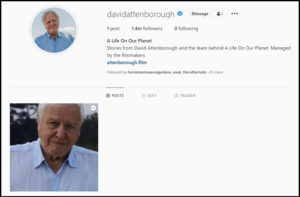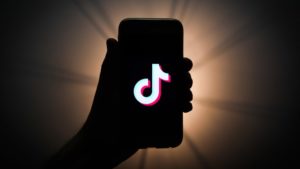Social Media: Pivoting Content From Location-Based Entertainment to Online Media
- Blog Posts
Full disclosure: My TikTok channel is blowing up, having recently crested 100,000 subscribers to the dismay of my teenage sons. This is particularly noteworthy for two reasons: first, I am no spring chicken, and two, my content focuses on recreating the antics of The Three Stooges, a comedy team that was long dead decades before most of the TikTok audience was born. More about that later.
With Facebook originating 16 years ago, it’s hard to comprehend the astronomical growth, reach and influence of social media around the world. Facebook alone has 2.5 billion monthly active users as of December 2019. That’s not accounting for the meteoric rise of Tik Tok, or longevity of the polarized Twitter-sphere of users. There are many takeaways for our location-based industry from this boom in online content and content creation. Even with our venues temporarily shuttered, there is a willing and expanding audience within reach. We may not be able to capture footfalls or move the turnstiles just yet, but social media provides a way to capture the hearts and minds of a new audience, to engage them in your mission, give them a glimpse behind the curtains, let them chat with your designers and operators, or let them collaborate on the next big thing.
One of the largest assets social media has is influencers and content creators. Younger generations are flocking to new forms of entertainment – many of which older generations simply don’t track as easily. It’s complex, ever shifting with the latest trend. Ultimately, we must embrace the fact that social media is a powerful entertainment medium on par with broadcast television, movies, and video games. YouTube, Instagram, TikTok, and other platforms have become the primary source of entertainment content for my own teenagers. I have seen them both struck dumb when bumping into a social media influencer on the street and they are more excited at the prospect of driving by the FaZe House (a $30M Hollywood Hills mansion that is home to the wildly successful esports organization) than they are revisiting a theme park. It seems likely, then, that the next big intellectual property is probably talking shape right now, in the ether of social media.
 Pre-pandemic, we were happily embracing what had become known as the “Experience Economy,” where consumers were investing in travel and experiences over material goods. Social media played into this notion brilliantly and began to alter the behavior of people in real world locations. Slumping brick and mortar stores began drawing crowds to their shops with events featuring big name ”influencers.” News of these events was spread through social media channels, so the sudden appearance of lines of young people winding around the block of a retail shop was a mysterious surprise to the uninitiated. The desire to share selfies online elevated the common photo opp to a whole new venue, the genre known as “Instagram Museum,” where stand alone attractions like the Museum of Ice Cream, Color Factory, and 29 Rooms had, until the Lost COVID Year of 2020, become a hot ticket drawing big crowds and generous admission prices. Still, for the most part, social media content was a one-way pipeline, on which creators would post and in some cases track their comments for feedback or inspiration.
Pre-pandemic, we were happily embracing what had become known as the “Experience Economy,” where consumers were investing in travel and experiences over material goods. Social media played into this notion brilliantly and began to alter the behavior of people in real world locations. Slumping brick and mortar stores began drawing crowds to their shops with events featuring big name ”influencers.” News of these events was spread through social media channels, so the sudden appearance of lines of young people winding around the block of a retail shop was a mysterious surprise to the uninitiated. The desire to share selfies online elevated the common photo opp to a whole new venue, the genre known as “Instagram Museum,” where stand alone attractions like the Museum of Ice Cream, Color Factory, and 29 Rooms had, until the Lost COVID Year of 2020, become a hot ticket drawing big crowds and generous admission prices. Still, for the most part, social media content was a one-way pipeline, on which creators would post and in some cases track their comments for feedback or inspiration.
Then, quarantine happened, and with everyone in lockdown the “Experience Economy” shifted again to what we might call the “Creator Economy:” While real world venues and attractions shuttered, content creation exploded (along with the sales of light rings, backdrops, smartphone tripods, and condenser mics). More content creators began to join the revolution, further expanding an audience base of willing and idle eyes.
 Soon, mainstream celebrities quickly joined the party. TikTok began as a platform by and for young females, primarily, but scroll through the app today, and your “foryou” feed might include contributions from Neil DeGrasse Tyson, Anthony Hopkins, Gordon Ramsey, Cindi Lauper and others – singers, comedians, advocates – all delivering spontaneous, thirty second bon mots. More recently, 93 year old Sir David Attenborough set a Guinness World Record for reaching one million followers on Instagram, and my team of no-name impersonators has drawn a crowd of 100,000 by paying tribute to The Three Stooges, the comedy team whose last member died in 1975. Apparently, there is an audience for everyone.
Soon, mainstream celebrities quickly joined the party. TikTok began as a platform by and for young females, primarily, but scroll through the app today, and your “foryou” feed might include contributions from Neil DeGrasse Tyson, Anthony Hopkins, Gordon Ramsey, Cindi Lauper and others – singers, comedians, advocates – all delivering spontaneous, thirty second bon mots. More recently, 93 year old Sir David Attenborough set a Guinness World Record for reaching one million followers on Instagram, and my team of no-name impersonators has drawn a crowd of 100,000 by paying tribute to The Three Stooges, the comedy team whose last member died in 1975. Apparently, there is an audience for everyone.
Interestingly, the spontaneous, impromptu, and handmade quality of these smartphone videos actually breaks down the perceived wall of celebrity. For the first time ever, it feels as if these are our friends and acquaintances. Will Smith is cracking jokes with us. Neil DeGrasse Tyson is explaining the mysteries of the universe to me. Anthony Hopkins thumbs a piano as he asks how we’re doing during lockdown. You can cook for Gordon Ramsey, and he might just repost your vid with his live critique!
 TikTok offers “duet” and “react” capabilities that let one user augment or react to the work of another. Everyone wants to play in the sandbox, and this form of plagiarism is encouraged since each repost extends the reach of the original, bringing more “likes,” more “shares,” and more subscribers. A recent post of a man skateboarding with a bottle of Ocean Spray Cranberry Juice to the accompaniment of Fleetwood Mac’s hit song Dream went inexplicably viral. So much so, that Mick Fleetwood himself replicated the original, skateboard and all. The duet is now the basis for a network broadcast commercial and Fleetwood Mac’s 1977 Rumours album is once again at the top of the charts, taking the meta pop culture references full circle.
TikTok offers “duet” and “react” capabilities that let one user augment or react to the work of another. Everyone wants to play in the sandbox, and this form of plagiarism is encouraged since each repost extends the reach of the original, bringing more “likes,” more “shares,” and more subscribers. A recent post of a man skateboarding with a bottle of Ocean Spray Cranberry Juice to the accompaniment of Fleetwood Mac’s hit song Dream went inexplicably viral. So much so, that Mick Fleetwood himself replicated the original, skateboard and all. The duet is now the basis for a network broadcast commercial and Fleetwood Mac’s 1977 Rumours album is once again at the top of the charts, taking the meta pop culture references full circle.
It is vital to consider this new “Creator Economy” as we begin to reopen our doors to the public. This global audience is eager to contribute, collaborate, and make connections with content creators, and even though venues remain closed, it is easier than ever to engage and expand your audience through minimal thirty second clips (shot on smartphones!) that are fun, conversational, intimate, and collaborative. You might tour the facility when the lights are down, share operational facts and figures with simple pop-up graphics, share maintenance efforts, and reveal industry secrets. Prompt comments and use the feedback as your own, always available focus group to determine the path ahead, and be sure to include them as part of your team.
Meanwhile, consider ways that you can encourage content creation at your venue, so that when they can visit in the real world, they will have the resources to create content right there and share it with the virtual world. Ask for comments and suggestions. You’ll get plenty of both. Everyone is bursting to get out of the house, and building your social media presence now can help ensure they beat a path to yours.
Related Posts
Thinkwell Group’s Own Patents
- Blog Posts
Did you know Thinkwell owns patents? Over the years, Thinkwell...
How Will Technologies Shape Our Interactions and Spaces in the Post-Confinement Era?
- Blog Posts
- White Papers
In a post-confinement world, human beings will seek the exact...
Lessons From Lockdown
- Blog Posts
As designers and developers of location-based experiences, we have the...